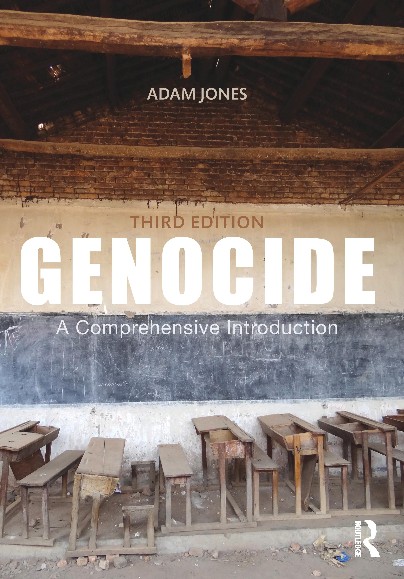The Ghosts of Muranow: A Journalist's Mission to Illuminate Poland's Haunted Past
By Donald Snyder
MSNBC.com, November 23, 2012
"When Polish journalist Beata Chomatowska walks the streets of Muranow, she can't stop thinking about the horrible things that happened there. 'It's a daily trauma,' she said. Present-day Muranow, a district of Warsaw, Poland, is built on rubble and the remains of Jews who perished there during World War II, but many residents are ignorant of the area's past. So Chomatowska started a website to educate them called 'Stacja Muranow,' which means 'Muranow Stop.' And in October she published a book by the same name, chronicling the haunted past of the former Jewish ghetto. 'It's a metaphor for Poland after the war, which largely erased the memory of its Jews,' said Chomatowska, 35, who is not Jewish but has long been fascinated by the history of Jews in Poland. A native of Krakow, she moved to Muranow in 2005 to start working at Rzeczpospolita (The Republic), a leading Polish newspaper, and was shocked by the silence and emptiness of her new neighborhood. 'How do people live in houses made of ghetto bricks?' she asked. 'The houses looked artificial and so did the hills. It was scary.' During World War II, the Germans packed 400,000 Jews into the 1.3 square-mile area that became known as the Warsaw Ghetto, where Muranow is located. Some 300,000 Jews were deported to the killing center at Treblinka. The final deportation, on April 19, 1943, became the prearranged signal for an armed uprising against German forces. After the Jewish resistance was crushed on May 16, 1943, most of the remaining Jews were sent to death camps and the Germans razed the ghetto. Thousands were buried in the ruins. Many hid in cellars and were killed when the buildings were flattened. Poland's post-war communist rulers, who were faced with the challenge of building housing for its many citizens left homeless by the war, found the rubble of the ghetto too extensive to clear. Buildings were constructed on the ruins using bricks from the ghetto. Built on this rubble, the street levels are uneven and often hilly.
Communist rulers touted Muranow as a utopia for workers and purposefully erased its Jewish history, leaving subsequent generations in the dark. In her book, Chomatowska tells the stories of some of the Jewish dead and laments the fact that most of today's Muranow residents know little of the neighborhood's history. That is starting to change. Thirty residents have joined Chomatowska's Muranow education project, meeting in an unfurnished office with no hint of the past. She's particularly proud of one of the murals painted by members of the group in the entry way of an apartment building. It features prominent Jews who lived in Muranow before the war, such as the creator of Esperanto, Ludwik Zamenhoff, who hoped his universal language would unite people of different cultures. [...]"
By Donald Snyder
MSNBC.com, November 23, 2012
"When Polish journalist Beata Chomatowska walks the streets of Muranow, she can't stop thinking about the horrible things that happened there. 'It's a daily trauma,' she said. Present-day Muranow, a district of Warsaw, Poland, is built on rubble and the remains of Jews who perished there during World War II, but many residents are ignorant of the area's past. So Chomatowska started a website to educate them called 'Stacja Muranow,' which means 'Muranow Stop.' And in October she published a book by the same name, chronicling the haunted past of the former Jewish ghetto. 'It's a metaphor for Poland after the war, which largely erased the memory of its Jews,' said Chomatowska, 35, who is not Jewish but has long been fascinated by the history of Jews in Poland. A native of Krakow, she moved to Muranow in 2005 to start working at Rzeczpospolita (The Republic), a leading Polish newspaper, and was shocked by the silence and emptiness of her new neighborhood. 'How do people live in houses made of ghetto bricks?' she asked. 'The houses looked artificial and so did the hills. It was scary.' During World War II, the Germans packed 400,000 Jews into the 1.3 square-mile area that became known as the Warsaw Ghetto, where Muranow is located. Some 300,000 Jews were deported to the killing center at Treblinka. The final deportation, on April 19, 1943, became the prearranged signal for an armed uprising against German forces. After the Jewish resistance was crushed on May 16, 1943, most of the remaining Jews were sent to death camps and the Germans razed the ghetto. Thousands were buried in the ruins. Many hid in cellars and were killed when the buildings were flattened. Poland's post-war communist rulers, who were faced with the challenge of building housing for its many citizens left homeless by the war, found the rubble of the ghetto too extensive to clear. Buildings were constructed on the ruins using bricks from the ghetto. Built on this rubble, the street levels are uneven and often hilly.
Communist rulers touted Muranow as a utopia for workers and purposefully erased its Jewish history, leaving subsequent generations in the dark. In her book, Chomatowska tells the stories of some of the Jewish dead and laments the fact that most of today's Muranow residents know little of the neighborhood's history. That is starting to change. Thirty residents have joined Chomatowska's Muranow education project, meeting in an unfurnished office with no hint of the past. She's particularly proud of one of the murals painted by members of the group in the entry way of an apartment building. It features prominent Jews who lived in Muranow before the war, such as the creator of Esperanto, Ludwik Zamenhoff, who hoped his universal language would unite people of different cultures. [...]"















No comments:
Post a Comment
Please be constructive in your comments. - AJ